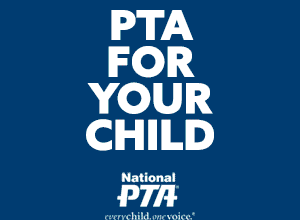SharePoint Vulnerability: Microsoft Warns of Active Attacks

The recent Microsoft SharePoint vulnerability has raised significant concern among organizations worldwide, as it exposes critical systems to potential breaches. Microsoft has issued alerts regarding “active attacks on SharePoint,” signaling that malicious actors could gain unauthorized access to sensitive file systems and execute harmful code. This alarming development has prompted the Cybersecurity and Infrastructure Security Agency (CISA) to highlight the urgent need for SharePoint patch updates, particularly for versions that remain unprotected. As cybersecurity risks for SharePoint escalate, IT departments must prioritize security assessments and apply the necessary patches to safeguard their infrastructure. With the stakes this high, understanding the implications of this vulnerability is essential for any entity relying on SharePoint for document collaboration and management.
In light of recent security threats, the critical issue surrounding vulnerabilities within collaboration platforms like Microsoft’s SharePoint has come to the forefront. Organizations are facing intensified scrutiny as they navigate risks associated with unauthorized access and potential data breaches. The increased focus on SharePoint security highlights the importance of deploying timely software updates and understanding the implications of security weaknesses. With the Cybersecurity and Infrastructure Security Agency (CISA) issuing alerts regarding these concerns, it’s clear that businesses must act fast to mitigate risks. By enhancing defenses and addressing these pressing security challenges, organizations can better protect themselves from evolving cyber threats.
Understanding SharePoint Vulnerability and Its Impact on Organizations
The ongoing security vulnerabilities in Microsoft SharePoint have raised significant concerns among businesses and governmental bodies globally. Notably, CISA’s recent alerts highlighted that the SharePoint vulnerability offers unauthenticated access to file systems, allowing malicious actors to execute code remotely. This security flaw leaves sensitive organizational data exposed, prompting immediate attention and remediation efforts. Organizations using SharePoint for document management and collaboration face heightened risks as these vulnerabilities may lead to extensive data breaches.
With the growing number of active attacks targeting SharePoint systems, it has become imperative for organizations to stay informed about the patches released by Microsoft. Although fixes have been deployed for several versions, the fact that one version remains vulnerable bears a serious threat to users. Vigilance is required as hackers can exploit this condition, manipulating their way into organizational networks. Consequently, understanding the ramifications of these vulnerabilities is key for organizations aiming to fortify their SharePoint security.
Mitigating Active Attacks on SharePoint Systems
In light of the significant cybersecurity risks for SharePoint highlighted by the recent active attacks, organizations must prioritize mitigation strategies. These strategies may include immediate implementation of available patch updates and reinforcing user authentication protocols. Furthermore, integrating multi-factor authentication (MFA) can serve as an additional safeguard against unauthorized access that could potentially arise from dealing with vulnerable systems.
Moreover, regular security audits of SharePoint servers and associated configurations may help identify weaknesses early on. IT departments should closely monitor CISA announcements regarding SharePoint vulnerabilities and adhere to best practices in cybersecurity. By proactively addressing the threat landscape around SharePoint, organizations can better prepare themselves to prevent data breaches and maintain the integrity of their data management systems.
Importance of Regular SharePoint Patch Updates
The importance of regular SharePoint patch updates cannot be overstated, especially in the wake of recent cyber threats. Microsoft has released crucial patches for two SharePoint versions, highlighting its commitment to ensuring user security. However, as one version remains vulnerable, companies using SharePoint must stay alert and ensure all updates are promptly applied. Regularly updating software not only addresses known vulnerabilities but also enhances overall system performance and user experience.
Staying current with SharePoint patch updates can mitigate the risk of falling victim to active attacks. Organizations should schedule regular maintenance checks and updates to their systems. By keeping software versions up to date, companies can secure their SharePoint environments against exploitation and reduce their vulnerability to future cybersecurity risks. Implementing robust patch management policies enables organizations to enhance their security posture while protecting sensitive information.
CISA SharePoint Alert: What You Need to Know
The CISA SharePoint alert serves as a crucial reminder of the evolving threat landscape associated with Microsoft SharePoint. As organizations continue to utilize SharePoint for collaboration, understanding the implications of this alert and the associated vulnerabilities is critical. CISA’s announcement stressed how the vulnerability facilitates unauthorized access, potentially leading to unauthorized code execution, which can jeopardize critical data and operations. Organizations must pay close attention to such alerts and react promptly to safeguard their systems.
Adhering to the CISA guidelines is essential for those operating on-premises SharePoint servers. The alert indicates that users must take immediate action to install available patches while monitoring their systems for suspicious activities. Persistent vigilance and adherence to cybersecurity best practices, as delineated by CISA, are fundamental to minimizing risks and ensuring a secure SharePoint environment.
Cybersecurity Risks for SharePoint: What Organizations Face
Organizations employing SharePoint must grapple with several cybersecurity risks that could compromise sensitive data. Recent trends indicate a surge in targeted attacks on SharePoint servers, especially with the advent of vulnerabilities that allow code execution and unauthorized access. The attacks’ capability to forge user identities raises alarms about potential data breaches and the implications of such incidents on organizational integrity and customer trust.
To combat these cybersecurity risks effectively, organizations should not only implement system updates but also conduct thorough risk assessments. Fostering a strong security culture within the organization, educating employees about cyber hygiene, and utilizing advanced monitoring tools can contribute significantly to enhancing overall security. Mitigating risks associated with SharePoint requires a proactive approach, allowing businesses to safeguard their critical data.
The Role of User Education in SharePoint Security
User education plays a vital role in bolstering SharePoint security as human errors often lead to security breaches. Organizations must train their employees on the risks associated with SharePoint and best practices to mitigate those risks. Understanding how to recognize phishing attempts or unauthorized access attempts can empower users and significantly reduce the risk of compromise. Continuous training sessions focusing on cybersecurity awareness are essential in fostering an informed workforce.
In addition, organizations should create resources that guide employees on safe SharePoint usage. Policies governing data sharing, password management, and secure networking practices can help build a culture of security awareness. As cyber threats evolve, consistent education and training ensure that employees remain vigilant and can contribute actively to protecting the organization’s SharePoint environment.
SharePoint Collaboration: Balancing Usability and Security
Balancing usability and security within SharePoint collaboration tools is a significant challenge for organizations. While organizations seek to maximize the efficiency and productivity offered by SharePoint, they must simultaneously protect sensitive information from cyber threats. This dual focus necessitates robust security measures that do not hinder user experience. For instance, implementing multi-factor authentication may enhance security but could introduce friction into user workflows.
To achieve this balance, organizations should leverage user-friendly security solutions that promote collaboration without compromising data integrity. By deploying features that simplify secure access to SharePoint content—such as single sign-on (SSO)—organizations can enhance both security and usability. Ensuring that users have seamless yet secure access to collaborative tools can empower teams while reducing the risk of breaches.
Best Practices for SharePoint Vulnerability Management
Effective management of SharePoint vulnerabilities requires organizations to adopt a proactive and comprehensive approach. This includes regularly monitoring for updates from Microsoft, implementing software patches, and coordinating with cybersecurity resources for timely response to vulnerabilities. Establishing a vulnerability management framework can facilitate accountability and structure in ensuring that all security measures are consistently practiced across the organization. An organized approach enables teams to act quickly and effectively when vulnerabilities are identified.
Moreover, incorporating automated tools for vulnerability scanning can assist organizations in maintaining compliance and identifying any potential gaps in security preparedness. By regularly evaluating the security landscape surrounding SharePoint, organizations can adapt their strategies to respond to emerging threats and enhance their defense mechanisms. Maintaining vigilance in vulnerability management is crucial for sustaining the secure operation of SharePoint.
The Future of SharePoint Security in a Cyber-Threat Landscape
As the cyber-threat landscape continues to evolve, the future of SharePoint security will require growing innovation and adaptation. Organizations will need to envision more robust defenses against the sophisticated tactics used by cybercriminals. Advances in AI and machine learning can offer proactive security measures capable of identifying anomalies within SharePoint environments, enabling quicker reactions to possible threats.
Collaboration between organizations and cybersecurity agencies will also play a pivotal role in shaping the future landscape of SharePoint security. Sharing intelligence on emerging threats and effective mitigation strategies fosters a community-driven approach to cybersecurity. By staying ahead of the curve in leveraging technology while supporting a culture of awareness, organizations can better position themselves against the unforeseen threats targeting SharePoint environments.
Frequently Asked Questions
What is the current Microsoft SharePoint vulnerability threat level?
Microsoft has issued alerts regarding active attacks targeting vulnerabilities in SharePoint, indicating a significant threat level. The Cybersecurity and Infrastructure Security Agency (CISA) warns that these vulnerabilities allow unauthorized access to file systems and the execution of code, posing a substantial cybersecurity risk for SharePoint users.
How does the recent CISA SharePoint alert affect organizations?
The CISA SharePoint alert highlights the critical vulnerabilities allowing unauthorized access to SharePoint content. Organizations utilizing SharePoint, especially on-premises servers, must implement the recently released patches to protect against potential exploits that can lead to data theft or code execution.
Are SharePoint patch updates sufficient to protect against vulnerabilities?
Microsoft has released patches for vulnerable versions of SharePoint, aimed at mitigating the associated risks. However, organizations need to ensure that they update to these patches promptly, as one version from 2016 remains exploitable. Regular monitoring for new updates and security practices is crucial to maintain protection against ongoing cybersecurity risks for SharePoint.
What types of attacks are associated with Microsoft SharePoint security vulnerabilities?
Active attacks on SharePoint exploit vulnerabilities that allow unauthorized system access and code execution. These attacks can enable hackers to impersonate users, leading to severe data breaches and potential compromise of connected services like Outlook and Teams.
How vulnerable is the 2016 version of SharePoint compared to newer versions?
The 2016 version of SharePoint remains vulnerable, as Microsoft has yet to release a patch for it. In contrast, updates have been provided for newer versions, highlighting a critical cybersecurity risk for organizations still using the 2016 version. It’s essential for these organizations to prioritize upgrading or applying the necessary security measures.
What should organizations do in response to the active attacks on SharePoint?
Organizations should immediately apply the latest SharePoint patch updates released by Microsoft. Additionally, they should assess their security protocols, conduct vulnerability assessments, and enhance monitoring for any signs of unauthorized access or anomalies in SharePoint usage.
How can SharePoint vulnerabilities lead to cybersecurity risks for organizations?
SharePoint vulnerabilities allow hackers access to sensitive information and the ability to execute malicious commands. Given its integration with other Microsoft services, such as Outlook and Teams, a breach can escalate risks rapidly, potentially leading to extensive data theft and compromised user accounts.
Will cloud-hosted SharePoint be affected by these vulnerabilities?
According to Microsoft, the active attacks are targeted at on-premises SharePoint servers only. Cloud-hosted SharePoint services, such as those offered through Microsoft 365, are currently not at risk from the identified vulnerabilities, making cloud services a more secure option in this context.
What precautions should be taken after a SharePoint server has been patched?
Even after patching, organizations should maintain strict user access controls and regularly review security settings to prevent exploitation. It’s also recommended to educate staff about risks and ensure continuous security monitoring to detect any unauthorized access attempts.
How can users verify the security status of their SharePoint systems?
Users can verify the security status of their SharePoint systems by checking for the latest patch updates from Microsoft, conducting vulnerability scans, and reviewing their access logs for unusual activities. Regular audits of their security configurations will also help in identifying potential vulnerabilities before they can be exploited.
| Key Point | Details |
|---|---|
| Active Attacks on SharePoint | Microsoft warns about ongoing attacks targeting SharePoint software, affecting businesses and governments worldwide. |
| Released Patches | Patches have been issued for two versions of SharePoint, but a version from 2016 remains vulnerable. |
| CISA Announcement | CISA indicates that the vulnerability allows unauthenticated access and the potential for code execution. |
| Scope of Impact | Thousands of organizations may have been affected; the impact is still under evaluation. |
| On-Premises Vulnerability | The attack targets on-premises SharePoint servers and does not affect Microsoft 365 cloud solutions. |
| Security Risks | Hackers can impersonate users even after patches, risking data theft and password harvesting through interconnected services. |
| Alaska Airlines Outage | An IT outage temporarily suspended operations, but its relation to the SharePoint vulnerability attack is unclear. |
Summary
SharePoint vulnerability has become a significant concern in recent weeks due to reports of active attacks aimed at the popular collaboration software. Microsoft has acknowledged these threats and swiftly released security patches to mitigate risks for its users. However, with one version still unpatched, organizations worldwide remain at risk of unauthorized access and data breaches. The implications of such vulnerabilities extend beyond SharePoint itself, highlighting the interconnected nature of IT environments and the potential for widespread exploitation. It is crucial for organizations to prioritize security updates and maintain vigilance against these evolving threats.




